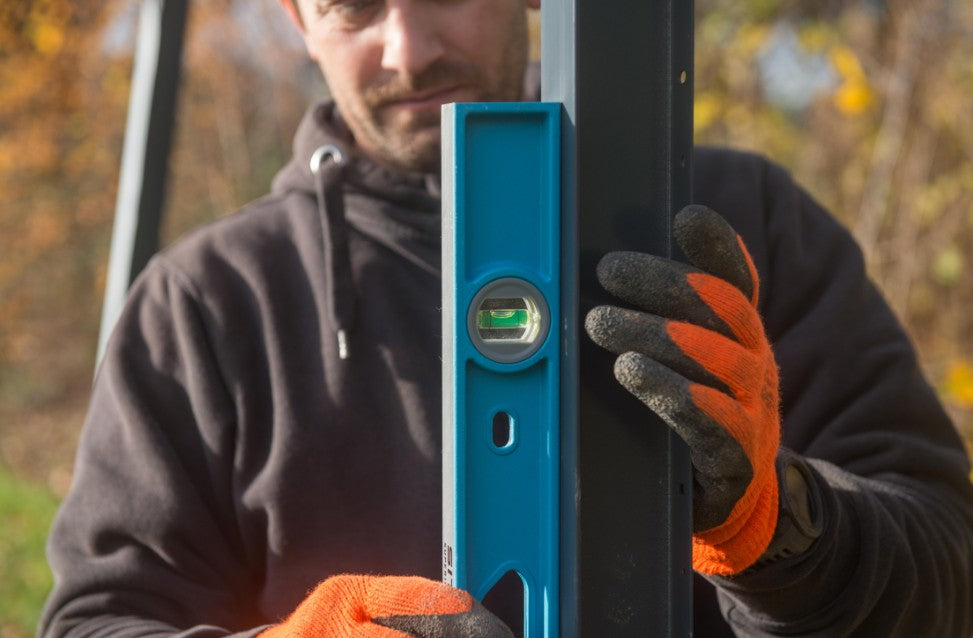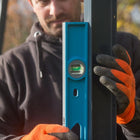How To Unlock A Frozen Door Lock

There’s the scraping of ice from our windscreens in the morning, then the travelling to work through icy road conditions, all for us to freeze at our desks while we wait for the heating to kick in. Not fun!
To our frustration, winter introduces a few icy challenges, one of which being frozen locks. Whether that be your front door, car, back gate, or anywhere else locks are present, they’re all prone to freezing – and you definitely don’t want to be left out in the cold to freeze yourself.
At Birkdale, we often receive queries on how to prevent our Long Throw Locks from freezing in winter, which can be done following the advice below. So, continue reading on as we explore various methods to prevent your locks from freezing in the first place, as well as ways to unfreeze them.

Method 1: Use WD-40
Spraying your locks with WD-40 helps to prevent moisture build-up inside the mechanism, which would otherwise freeze over a cold night. If you’re expecting freezing temperatures, spray some WD-40 into your lock and the lubricant will take care of things.
Be sure to get the lubricant inside the lock, though. Spraying the outside won’t do you any favours. So, place the nozzle right up against the lock opening and spray for around 3-5 seconds.
For particularly cold winters, you’ll want to spray all of your locks twice per week to keep them in good, working order.
Method 2: Cover the lock opening
This method is a simple trick to help keep the inside of your locks dry when it’s cold. Simply place a strong magnet on the outside of the lock opening, making sure it leaves no room for moisture to sneak in.
You can leave a magnet on over winter, popping it off as and when you need to access the lock.
If you need an immediate solution but struggling to find a magnet, you can always substitute it for a woolly sock. Simply slide it over the lock and twist so it’s nice and snug, then tie into a knot so it doesn’t fall off. This should keep the lock warm enough to prevent freezing.
That said, the magnet is certainly a wiser choice. If the sock gets wet, it could end up freezing around the lock, and then you’ll be really out of luck. So only use the sock as a last resort and when the weather forecast predicts no rain.
Method 3: Smear Vaseline/ petroleum jelly
Similar to WD-40, Vaseline (aka petroleum jelly) blocks moisture from getting into your lock. To apply this method, smear some Vaseline onto your key and then insert it into the lock. From here, shake it around as much as you can, with the aim of coating as much of the inside mechanism as you can. Repeat this a few times for good measure and enjoy a freeze-free lock throughout winter.
The only downside? This method won’t work with combination locks, since you can’t use a key to access and coat the inside.
Thankfully, if you missed the opportunity to prevent your locks from freezing, you’re not completely out of luck. Here are a few ways to help unfreeze your locks in little to no time:
Method 1: Use hand sanitiser
Because of COVID-19, hand sanitiser is something many of us carry around – and it uses go beyond keeping us safe from the virus. Simply squirt some hand sanitiser on your key and slide it into the lock. Move it back and forth a few times, then try your luck with turning it. The alcohol in the hand sanitiser should melt the ice enough for the lock to become free.
Method 2: Spray de-icer
Keep a bottle of de-icer inside the house for when you might need it, whether that be to clear your cars windscreen or free up the lock to your back gate. De-icer is a quick and simple way to remove the frozen ice in your locks. Just like the WD-40 method, simply spray the de-icer inside the keyhole to free up the mechanism, then try the key and keep your fingers crossed.
You may have to repeat this method a few times depending on how frozen your lock is.
Method 3: Pour hot water
If all else fails, or if you can’t locate any de-icer or hand sanitiser, hot water is your best bet. Try pouring some over your frozen lock but be prepared to work fast. Hot water can freeze very quickly in cold conditions, so get the key in and turn without hesitation. Most importantly, though, be careful not to burn yourself!Looking for further winter garden advice?
We’ve got you covered. At Birkdale, we know that during the coldest parts of the year, garden can end up looking a little sad. So to help bring some extra life into your garden this winter, take a look at one of our recent articles titled 5 ways to brighten up your garden this winter.
Got any questions? We’re here to help. Contact the experts at Birkdale today and we’ll be more than happy to assist.
DuraPost® fencing systems
Create Extraordinary Spaces
DuraPost® steel fence posts and composite fence panels. Find out why they are the ultimate fencing system.






